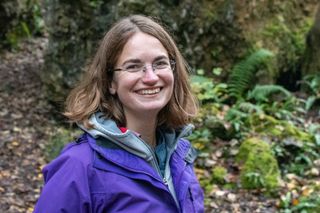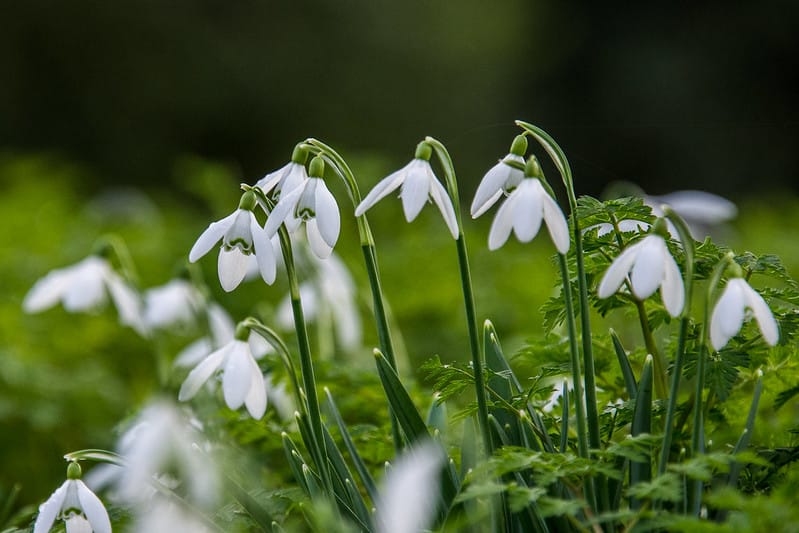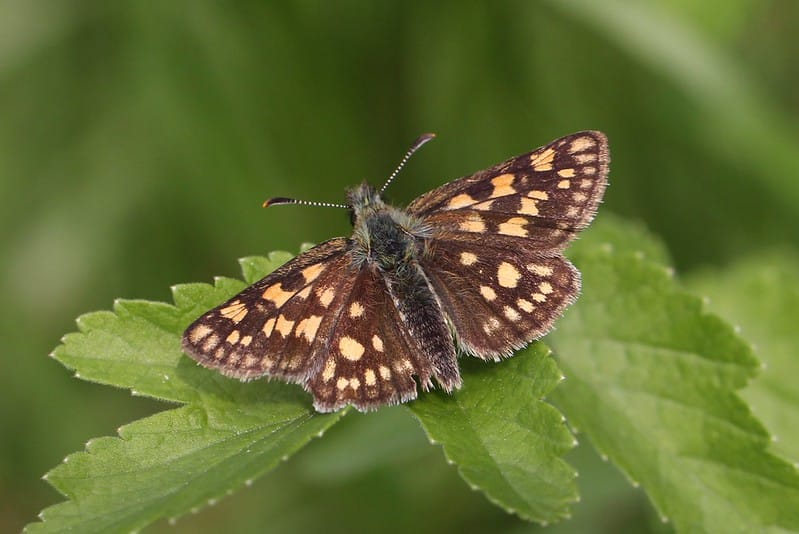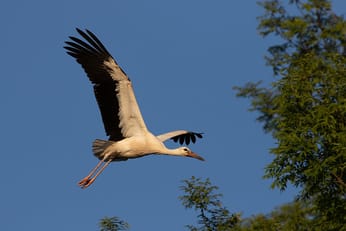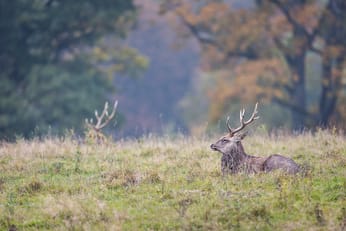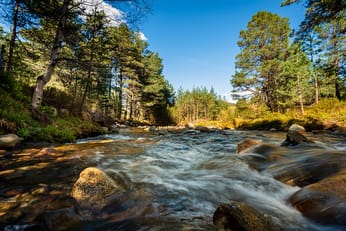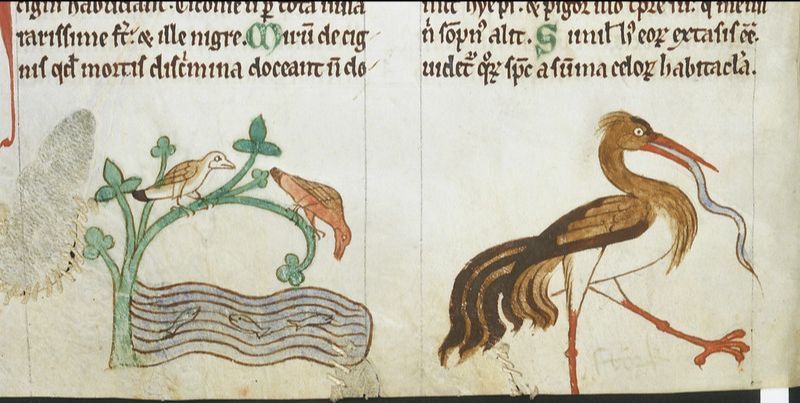
The debate over Knepp's new storks
A reintroduction project at the Knepp Estate in West Sussex has divided opinion.
There could scarcely be a better image of hope: in the midst of disease and declining biodiversity, stork chicks have hatched at the Knepp estate in West Sussex.
But there has been an atmosphere of unease around the introduction of storks into the UK. The project has divided opinion: while some ecologists have vigorously promoted the birds, other ecologists have expressed their concern. Inkcap has explored the debate.
Historical record
Much of the stork debate has pivoted on whether the birds were historically present in the UK. If the birds were here before, and wiped out by human activity, there is certainly a stronger moral case for bringing them back.
The feasibility report for the stork’s reintroduction cites compelling evidence that storks once roamed Britain, including illustrations in medieval manuscripts and an account of a pair nesting on the roof of a cathedral in Edinburgh in 1416.
“We have bones that go back to the Pleistocene. For as long as people can write, in every age there’s evidence storks were here,” says Derek Gow, who led the work on the stork’s reintroduction. “We destroyed them, we destroyed their habitats, we destroyed their nests.”
But not everyone is convinced by the historical record. Nick Acheson, a wildlife expert, believes that storks are at least as likely to have turned up in Britain as pets than as wild birds.
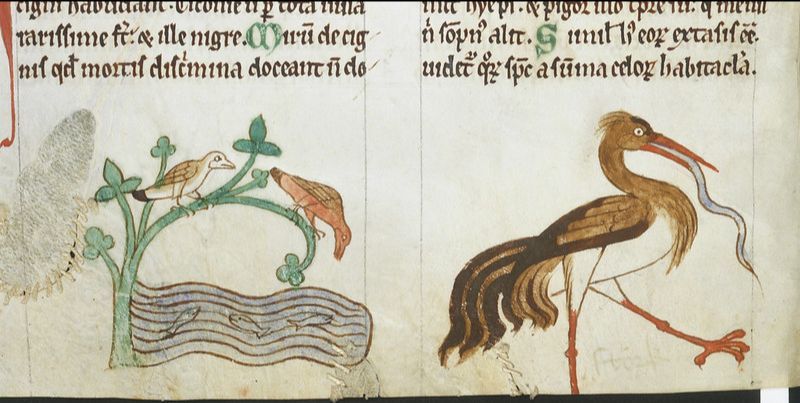
“Any monk educated enough to write and illustrate a medieval manuscript is likely to have studied in Europe, where they are going to have seen storks. Plus, we have archaeological and historical records from the Romans onwards of all kinds of animals being imported as pets, as glamour items for private menageries,” he says.
“So I’m not saying they were never here as a wild bird, although I don’t believe they were. What I’m saying is that the evidence is astonishingly flimsy.”
Damage to native wildlife
This question of historical record may not be so important if ecologists weren’t also worried about the impact of storks on the UK’s existing native wildlife, such as wading birds and amphibians.
Storks are predators. Some of their potential prey across Sussex is threatened, including the sand lizard and smooth snake, “the latter especially, which has its entire range within a white stork day trip,” says Paul Tout, a naturalist and environmentalist living in Italy. “People have pointed out the enormous amount of biodiversity created at Knepp. This is true, but birds have wings and, in short order, the birds will disperse from Knepp into the surrounding countryside, beyond the remit of the project’s authors to monitor or regulate their behaviour.”
Gow sees these concerns as minimal in the face of a wider loss of biodiversity in the countryside, and believes that storks will not threaten the UK’s wildlife.
“The rare species are all left in tiny patches in the landscape,” he says. “Storks are generalist feeders; they’re not going to go looking for sand lizards and specifically threatened species. They’re going to feed on things that are common and abundant.”
Not endangered
Alongside these concerns is the fact that storks are not endangered. Populations have been increasing across Europe, leading some to question the rationale underpinning their reintroduction, particularly as other native species suffer due to factors like habitat loss and climate change.
“Is it not somehow going backwards by promoting one big charismatic species over a functioning ecosystem?” says Sophie Leguil, a botanist and ecologist living in London. She fears that a UK reintroduction could imitate the stork reintroduction project that took place in 1972 in her native Alsace. The project was a runaway success – there are now around 1,000 breeding pairs – which has led to new concerns about the impact on other native wildlife.
“There are millions of other things that could have been done before reintroducing storks: boosting populations of our native birds or amphibians or insects which, in turn, could be good prey for storks, and then waiting for them to come or reintroducing them, rather than just introducing a predator species and hoping it will be fine,” she says.
Private project
There has been some surprise that the stork reintroduction has taken place at Knepp, a rewilding project that has, to date, focused its energies on reestablishing natural processes, rather than managing the landscape for any particular species. Some have taken issue with the fact that this was a privately-run project, with no need for a government licence as storks are already regular visitors to the UK.
“This is a private project – a private finance initiative if you like – but it is also a project that has implications for the ecology and fauna of the entire British Isles, inside and outside Knepp: playing ‘God’, if you like,” says Tout. “I think the public consultation process for such projects needs to be better, as only one side of the story is told when proposals are made.”
But for Derek Gow, this legal and financial background provided a rare opportunity to act decisively in favour of nature conservation.
“Frankly, it’s good we don’t need a licence,” he says. “The people who want you to have a licence are not experienced nature conservationists – they are bureaucrats, people good at filling in forms and stuffing them into a computer. That will not help stop the catastrophic collapse of nature. What will help is us actually doing things, taking action, and that’s what we’ve done.”
What does it say about UK conservation?
Broadly, everyone involved in the stork debate is on the same page: they want nature in the UK to flourish. Most support rewilding. But the concerns over these little chicks have highlighted some fissures in the conservation movement.
The introduction of storks has brought joy to many, and there is every chance that it will generate money, too. Storks are undeniably majestic birds that inspire wonder and excitement: a beacon of what nature could be in the UK. And the fact that the storks are already here, nesting and hatching, shows that splendid visions needn’t be dampened by bureaucracy.
Those who oppose the storks are “a tiny minority of people who have looked at this project and got their knickers in a twist,” says Gow. “At the end of it all, I don’t care what they think. What we did was right: the whole point was to try and re-engage with a much wider percentage of people in society, and the stork project has done just that.”
But, for others, the project epitomises a tendency for nature conservationists – and particularly some supporters of rewilding – to prioritise large, magnificent beasts over the delicate balance of nature that is present in the UK today.
“I completely understand the argument that storks are charismatic, they will bring people to Knepp, possibly to conservation,” says Leguil. “My view – and I’m not pretending I’ve got the answer – is that, wouldn’t it be better somehow to increase the awareness of some of our native species, which are more threatened?”
The debate is not over, but the storks are already here. How their presence shapes the countryside – whether they become beloved birds or public pests – may inform future reintroductions.
Subscribe to our newsletter
Members receive our premium weekly digest of nature news from across Britain.
Comments
Sign in or become a Inkcap Journal member to join the conversation.
Just enter your email below to get a log in link.

